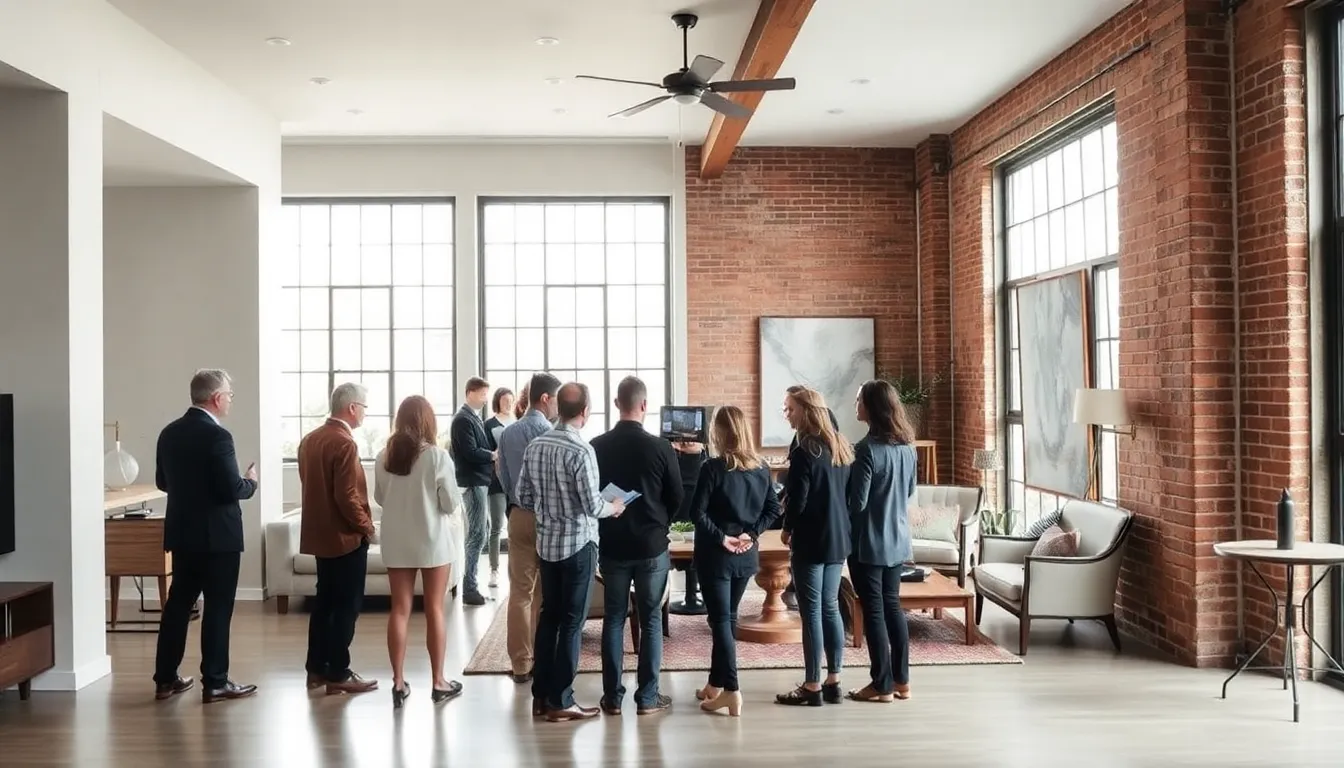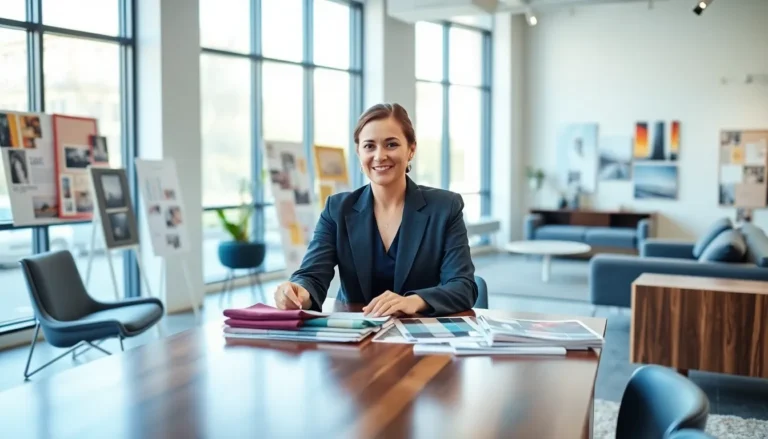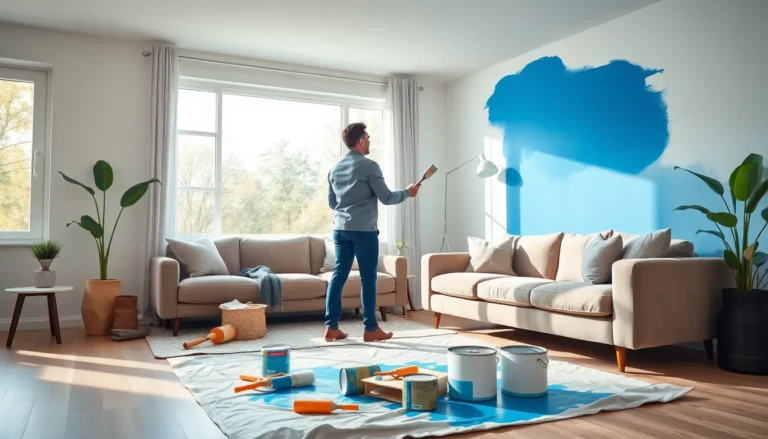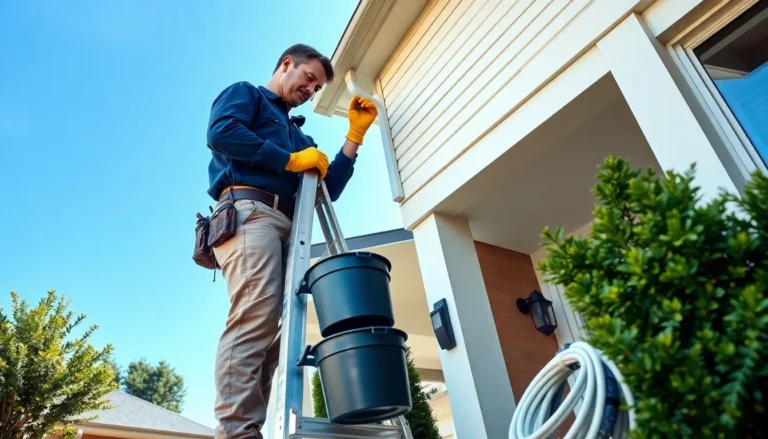Ever walked into a room and thought, “Wow, this place really knows how to show off?” Well, that’s the magic of interior design. From chic urban apartments to cozy country homes, the art of interior decoration can transform any space into a work of art. In this engaging guide, we’ll jump into the mesmerizing world of interiors, where color, style, and sustainability collide with creativity. Buckle up for a journey that’ll inspire anyone yearning to revamp their living space.
Table of Contents
ToggleUnderstanding Interior Design Styles

When it comes to interior design, styles can vary as widely as personal tastes. From classic elegance to modern minimalism, understanding these styles is crucial to creating a harmonious environment. Popular styles include:
1. Modern Style
Defined by clean lines, minimal décor, and a neutral color palette, modern design champions simplicity without sacrificing utility. It’s like wearing your favorite plain white tee and looking effortlessly chic.
2. Contemporary Design
Often confused with modern, contemporary designs focus on current trends and can evolve quite rapidly. Think of it as fashion that’s always on the runway, adapting to new styles and creative innovation.
3. Rustic Appeal
Imagine inviting the great outdoors indoors. Rustic design embraces natural materials and vintage elements, bringing warmth and texture to a space. Wooden beams, distressed furniture, and earth tones create a cozy retreat.
4. Industrial Vibes
With its raw materials and urban aesthetics, industrial design is perfect for lofts and modern-day warehouses. It showcases the beauty of function over form and often features exposed bricks and pipes, giving a space character that would excite any city lover.
By understanding these styles, designers can curate environments that resonate with their occupants’ tastes.
Key Elements of Interior Design
Diving deeper into the world of interiors, it’s essential to consider the key elements that help define and enhance a space:
1. Space
The layout forms the foundation of interior design. How the space is organized can influence not just aesthetics but also functionality. This can turn a cramped room into an airy escape with the right arrangement.
2. Light
Lighting can dramatically alter the mood within any space. Natural light is a designer’s best friend, while strategically placed fixtures can make a dramatic statement or create a cozy atmosphere. It’s all about ambiance.
3. Color
Colors have the power to influence emotions and perceptions. Bright colors energize a space, while soft palettes can provide tranquility. Choosing the right color scheme can be the difference between feeling alive or lulled into sleep.
4. Texture
Mixing materials can add depth to interiors. Whether adorned with plush fabrics or sleek metals, texture is vital in creating visual interest, making the space more inviting and layered.
5. Furniture
Selecting the right furniture involves blending functionality with style. It’s about finding pieces that not only serve a purpose but also reflect personality, whether it’s a statement armchair or a comfortable sectional.
6. Accessories
Decoratives like art, plants, and lighting pieces are vital in giving a space personality. They act as the cherry on top, adding that final touch that brings everything together, elevating a well-thought-out design into something memorable.
The Role of Color in Interiors
Color is more than just a splash on the walls: it’s an emotional language that speaks volumes about the inhabitants. Let’s break down its influence further:
1. Color Psychology
Different colors evoke different feelings. For example, blue tends to induce calmness while red can ignite passion and excitement. Knowing this can help in shaping mood across spaces from playful kids’ rooms to serene bedrooms.
2. Creating Space Perception
Light colors can make spaces feel larger and more open, while dark shades can create a cozy, intimate atmosphere. Clever use of color can fool the eye, transforming a compact living room into an airy oasis.
3. Accent Walls
Using bold colors on a single wall, known as an accent wall, can introduce dynamism to the environment without overwhelming it. This technique can highlight features or create a focal point that draws curiosity.
Trends Shaping Modern Interiors
Interior design trends are like fashion trends: they ebb and flow dynamically. Here are a few noteworthy trends:
1. Biophilic Design
Bringing nature indoors has become increasingly popular, with greenery incorporated into décor. Living walls and indoor plants not only purify the air but also enhance aesthetics, reminding us of the beauty outdoors.
2. Minimalism
Simplicity is key. Fewer accessories and a focus on quality over quantity create a sense of zen in spaces that feel clutter-free. It’s the design philosophy of less is indeed more.
3. Circular Design
The concept of sustainability extends into how we view interiors, with a focus on upcycling and multi-functional furniture. This trend encourages savvy consumers to think past single-use pieces.
4. Maximalism
On the flip side, maximalism takes boldness to another level where clashing colors, patterns, and a multitude of decor express individuality. It’s the celebration of personal collections and creativity.
Sustainable Interior Design Practices
The conversation on sustainability has permeated every aspect of our lives, including design. Adopting eco-friendly practices is now an essential part of any thoughtful designer’s toolkit.
1. Use of Sustainable Materials
Eco-friendly materials such as bamboo, reclaimed wood, and recycled metal are becoming increasingly popular. These choices reflect a commitment to the environment without sacrificing style.
2. Energy Efficiency
Incorporating energy-efficient appliances and fixtures can significantly reduce a household’s carbon footprint. Designers now prioritize this aspect to design spaces that are not only stylish but also smart.
3. Upcycling and Reusing
Rather than tossing out old furniture, many designers are focusing on creative ways to repurpose items, blending the old with the new. This approach also ensures each piece holds a story.
The Future of Interior Design
The interior design landscape continues to evolve with technology at the forefront. From virtual reality design tools to smart homes, the future is bright and filled with possibilities.
1. Smart Technology
Smart devices enhance functionality, allowing homeowners to control lighting, security, and heating with just a few taps or voice commands. This convergence of design and technology is crucial for modern living.
2. Virtual Reality in Design
Designers are now using VR to provide clients a sneak peek at their spaces. This immersive experience can help in decision-making and creates a more engaged designing process.
3. Personalized Spaces
Future trends are leaning towards customization driven by user preferences. Clients want spaces that reflect their identities and values, urging designers to craft tailored experiences.






